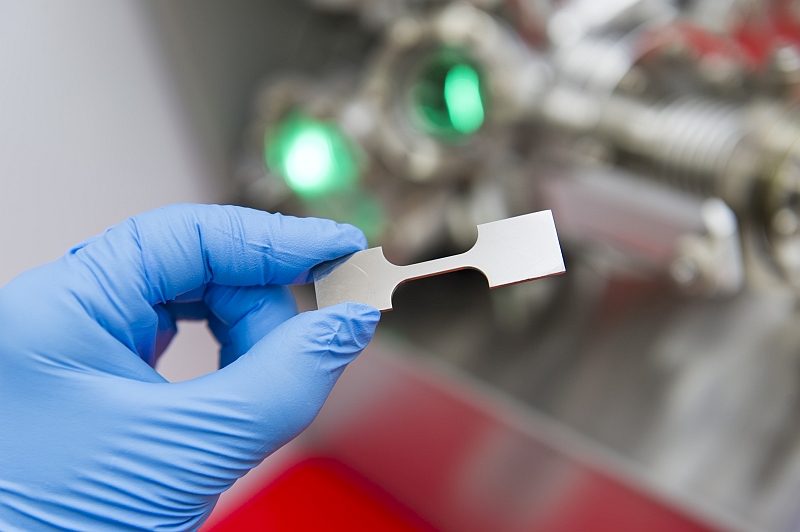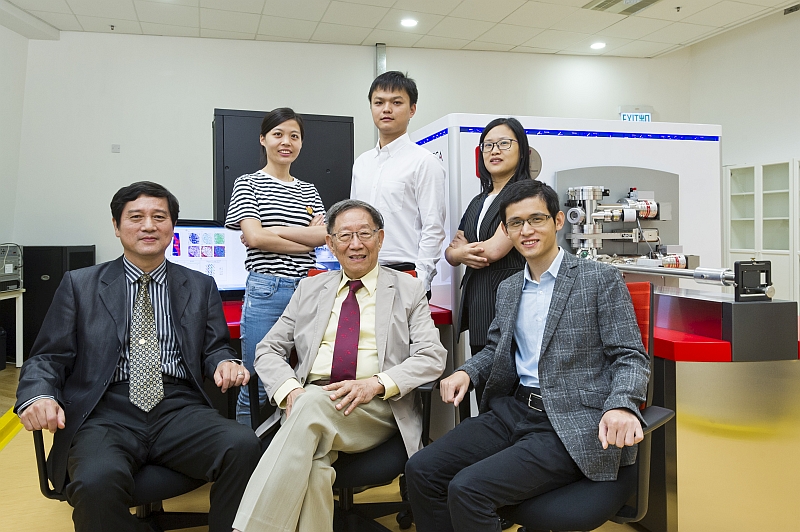Extremely strong and yet incredibly ductile multicomponent alloys developed

Overcoming the critical issue of the strength-ductility trade-off dilemma for structural materials
A research team led by City University of Hong Kong (CityU) has developed a novel strategy to develop new high-strength alloys which are extremely strong and yet also ductile and flexible. The strategy overcomes the critical issues of the strength-ductility trade-off dilemma, paving the way for developing innovative structural materials in future.
Multiple-principal element alloys, generally referred as high-entropy alloys (HEAs), is a new type of materials constructed with equal or nearly equal quantities of five or more metals. They are currently the focus of attention in materials science and engineering due to their potentially desirable properties for structural applications. Yet most of the alloys share the same key detrimental feature: the higher the strength of an alloy, the less the ductility and toughness, meaning that strong alloys tend to be less deformable or stretchable without fracture.
Recently, however, a research led by Professor Liu Chain Tsuan, University Distinguished Professor of the Department of Materials Science and Engineering at CityU, has found a breakthrough solution to this daunting decades-long dilemma— by making high-entropy alloys both strong and yet also very ductile through massive precipitation of nanoscale particles. This cutting-edge research has just been published in the latest issue of the prestigious journal Science, titled “Multicomponent intermetallic nanoparticles and superb mechanical behaviours of complex alloys”.
Solving strength-ductility trade-off
“We are able to make a new high-entropy alloy called Al7Ti7 ((FeCoNi)86-Al7Ti7) with a superior strength of 1.5 gigapascals and ductility as high as 50% in tension at ambient temperature. Strengthened by nanoparticles, this new alloy is five times stronger than that of the iron-cobalt-nickel (FeCoNi)-based alloy,” says Professor Liu.
“Most conventional alloys contain one or two major elements, such as nickel and iron to manufacture,” he explains. “However, by adding additional elements of aluminium and titanium to form massive precipitates in the FeCoNi-based alloy, we have found both the strength and ductility have significantly increased, solving the critical issue of the trade-off dilemma for structural materials.”
Moreover, high-strength alloys usually face plastic deformation instability, known as the necking problem, meaning that when the alloy is under a high strength, its deformation would become unstable and very easily lead to necking fracture (localized deformation) with very limited uniform elongation. But the team has further found that by adding “multicomponent intermetallic nanoparticles”, meaning complex nanoparticles made of different element atoms, it can greatly strengthen the alloy uniformly by improving the deformation instability.
Tackling “necking problem”
And they have found the ideal formula for these complex nanoparticles, which consists of nickel, cobalt, iron, titanium and aluminium atoms. Professor Liu explains that each of nanoparticle measuring 30 to 50 nanometres only. The iron and cobalt atoms which replace some of the nickel components helps to reduce the valence electron density and improve the new alloy’s ductility. On the other hand, replacing some of the aluminium with titanium largely reduces the impact of moisture in air to avoid induced embrittlement in this new strong alloy.
“This research opens up a new design strategy to develop superalloys, by engineering multicomponent nanoparticles to strengthen complex alloys to achieve superb mechanical properties at room and elevated temperatures,” says Professor Liu.
He believes that the new alloys developed with this novel strategy will perform well in temperatures ranging from -200°C to 1000°C. Hence they can act as a good base to further develop for structural use in cryogenic devices, aircraft and aeronautic systems and beyond.
Professor Liu is the corresponding author of the paper, and Yang Tao, his PhD student and current senior research associate at CityU’s Department of Materials Science and Engineering is the first-author. Other co-authors include Chair Professor Kai Jijung, Assistant professor Dr Alice Hu, post-doc fellows Zhao Yilu, Tong Yang, Wei Jie and PhD student Chen Da from CityU’s Department of Mechanical Engineering and Center for Advanced Structural Materials; together with Dr Jiao Zengbao, Assistant Professor of Department of Mechanical Engineering at the Hong Kong Polytechnic University; Professor Han Xiaodong and Dr Cai Jixiang from the Institute of Microstructure and Property of Advanced Materials of Beijing University of Technology; Professor Lu Ke, Director of Shenyang National Laboratory for Materials Science, Institute of Metal Research, Chinese Academy of Sciences; and Professor Liu Yong from the State Key Laboratory of Powder Metallurgy, who is also the director of Powder Metallurgy Research Institute at Central South University.r

Related stories: